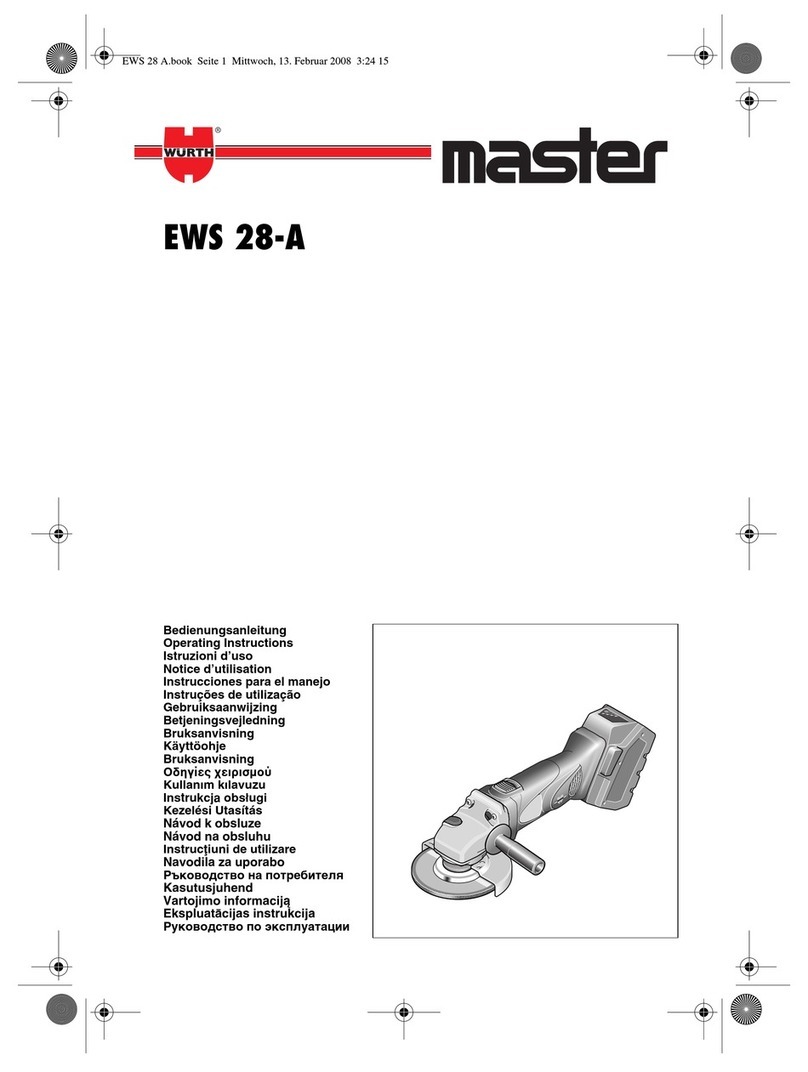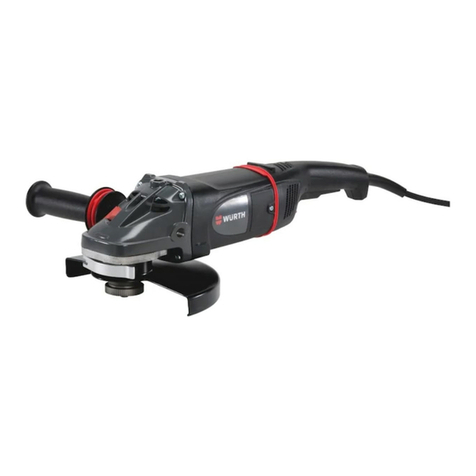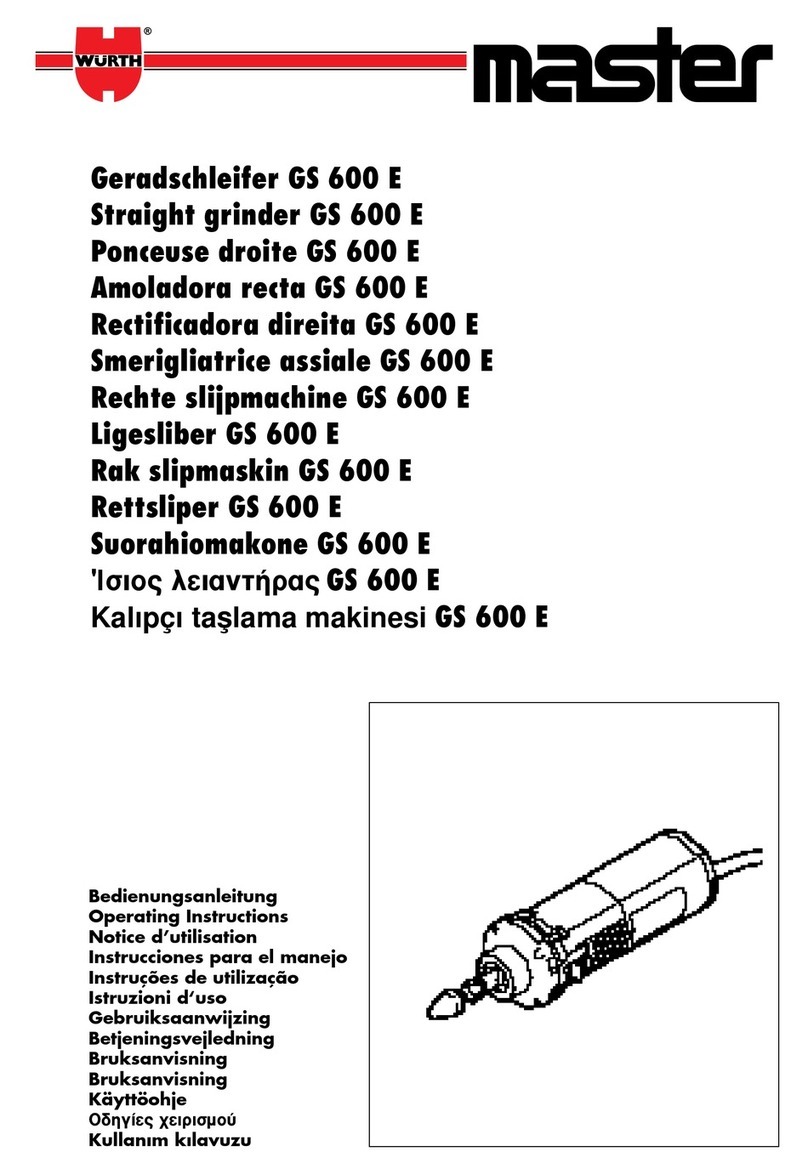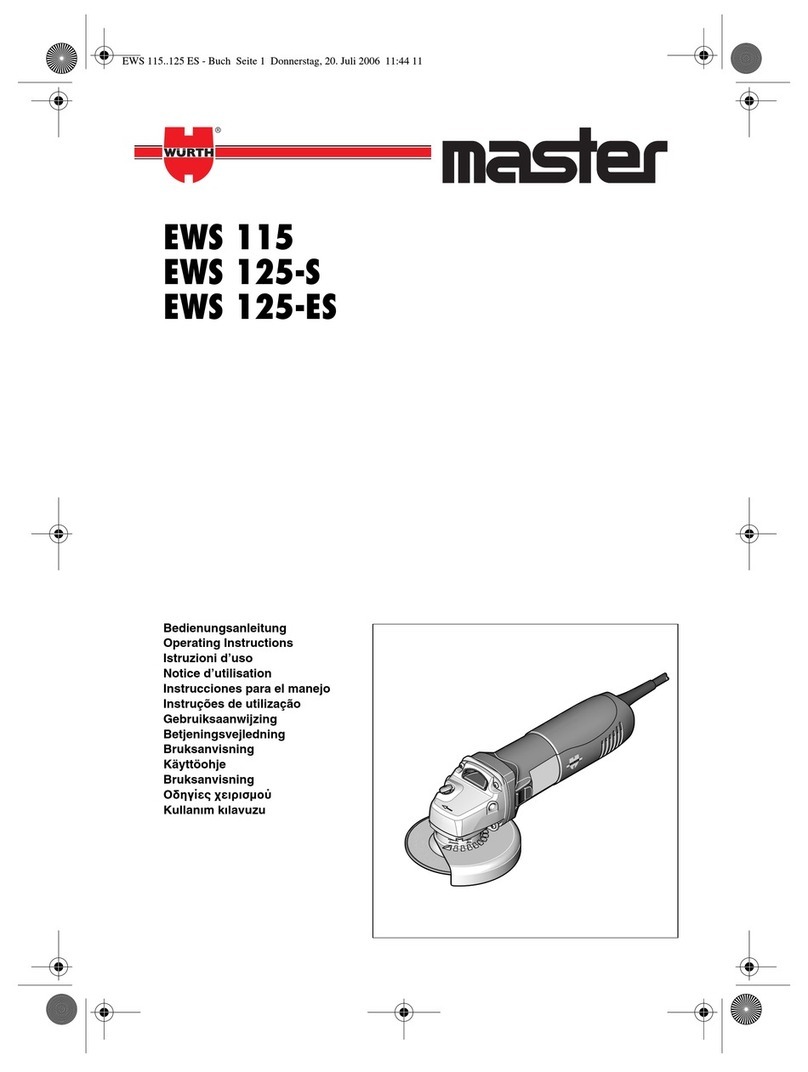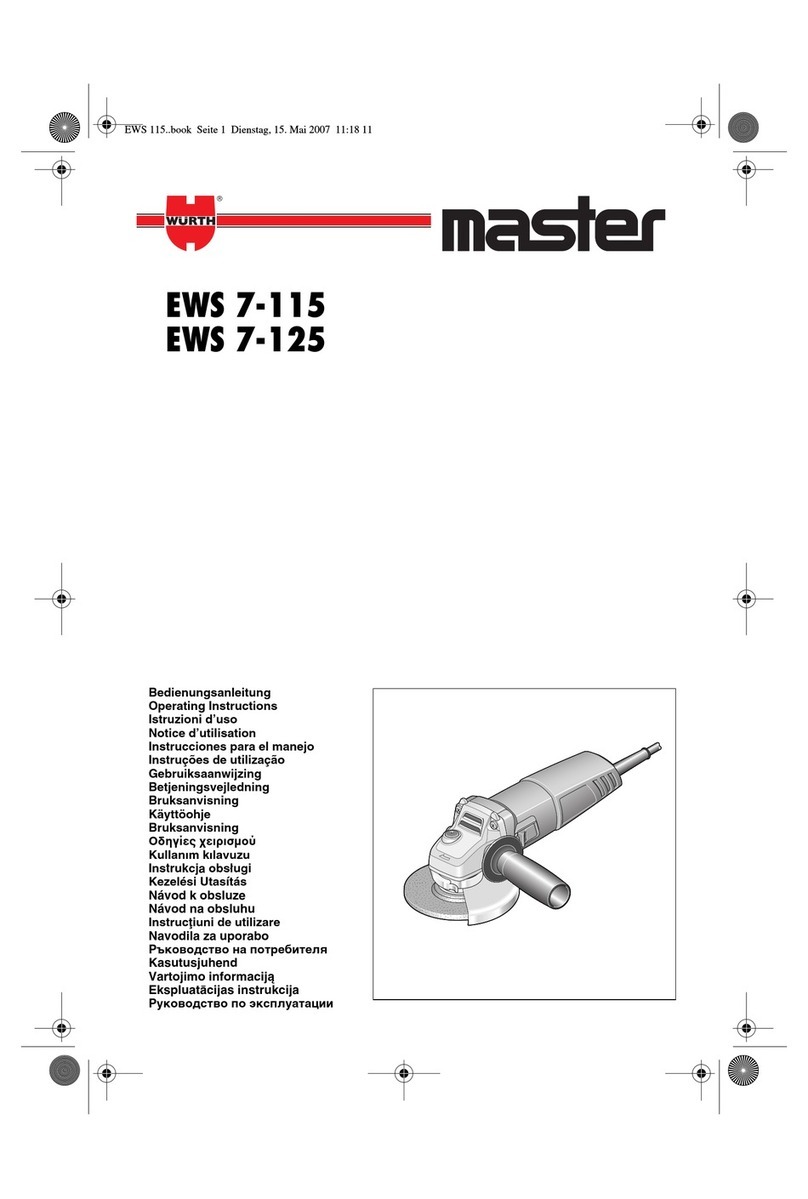Gefahrloses Arbeiten mit dem Gerät ist nur möglich, wenn Sie
die Bedienungsanleitung und die Sicherheitshinweise vollstän-
dig lesen und die darin enthaltenen Anweisungen strikt befol-
gen.
Wird bei der Arbeit das Netzkabel beschädigt oder durchtrennt,
Kabel nicht berühren sondern sofort den Netzstecker ziehen. Ge-
rät niemals mit beschädigtem Kabel benutzen.
Schutzbrille, Gehörschutz und Staubschutzmaske tragen.
Schutzhandschuhe und festes Schuhwerk tragen.
Beim Arbeiten das Gerät immer mit beiden Händen halten und
für einen sicheren Stand sorgen.
❏Bei allen Arbeiten mit dem Gerät muß der Zusatzgriff 4 montiert sein.
❏Wird mit Schrupp- oder Trennscheiben gearbeitet, muß die Schutzhaube 8
montiert sein. Wird mit dem Gummischleifteller oder mit der Topfbürste/
Scheibenbürste/Fächerschleifscheibe gearbeitet, sollte der Handschutz 13
(Zubehör) montiert sein.
❏Nur Schleifwerkzeuge verwenden, deren zulässige Drehzahl mindestens so
hoch ist, wie die höchste Leerlaufdrehzahl des Gerätes.
❏Die Bohrung der Schleif-/Trennscheibe muß ohne Spiel auf den Zentrier-
bund des Aufnahmeflansches 9passen. Keine Reduzierstücke oder Adapter
verwenden. Vor dem Einschalten prüfen, ob das Schleifwerkzeug richtig
montiert ist und sich frei drehen kann.
❏Bei Montage und Verwendung der Schleifwerkzeuge Anweisung des Her-
stellers beachten.
❏Neue Schleifwerkzeuge bei höchster Leerlaufdrehzahl mindestens
30 Sekunden zur Probe laufen lassen.
❏Beschädigte, unrunde bzw. vibrierende Schleifwerkzeuge dürfen nicht ver-
wendet werden.
❏ Schleifwerkzeuge vor Stoß, Schlag und Fett schützen.
❏Das Gerät darf nur für Trockenschliff/Trockenschnitt verwendet werden.
❏Trennen von Gestein nur mit Führungsschlitten, Schutzhaube und Staubab-
saugung. Der Staubsauger muß für Gesteinsstaub geeignet sein.
❏Asbesthaltige Materialien dürfen nicht bearbeitet werden.
❏Das Gerät nicht im Schraubstock festspannen.
❏Kabel immer nach hinten vom Gerät wegführen.
❏ Das Gerät nur eingeschaltet gegen das Werkstück führen.
❏Hände weg von rotierenden Schleifwerkzeugen.
❏ Vorsicht vor verdeckt liegenden elektrischen Leitungen, Gas- und Wasser-
rohren. Den Arbeitsbereich überprüfen; z.B. mit einem Metallortungsgerät.
❏Beim Schleifen von Metall entsteht Funkenflug. Achten Sie darauf, daß keine
Personen gefährdet werden. Wegen Brandgefahr dürfen sich keine brenn-
baren Materialien in der Nähe (Funkenflugbereich) befinden.
❏Drehrichtung beachten. Gerät immer so halten, daß Funken und Schleif-
staub vom Körper wegfliegen.
❏Vorsicht! Schleifwerkzeug läuft nach, nachdem das Gerät ausgeschaltet
wurde.
❏Nachlaufende Trennschleifscheiben nicht durch seitliches Gegendrücken ab-
bremsen.
❏Nur Original Würth-Zubehör verwenden.
☞Weitere Sicherheitshinweise siehe Beilage.
Zu Ihrer Sicherheit






